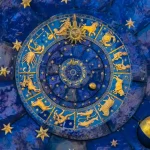The Origin of Meditation and evolution

The origin of meditation dates back several thousand years to ancient India. Throughout early history, neighboring countries swiftly adopted the practice, incorporating it into numerous world religions. The terminology we now use to describe “meditating” emerged in the 12th century AD, originating from the Latin word “meditatum.”
Ancient history and Origin of Meditation
The earliest documented records that mentioned meditation involved Vedantism, which is a Hindu tradition in India, around 1500 BCE. However, historians believe that meditation was practiced before this time, as early as 3000 BCE.

Between 600 and 500 BCE, Taoist China and Buddhist India recorded the development of other meditation forms. Although historians continue to debate the precise origins of these practices, especially Buddhist meditation, they believed that meditation played a central role in the formula for achieving morality, contemplative concentration, knowledge, and liberation.
Between 400 and 100 BCE, the sage Patanjali compiled the Yoga Sutras, which outline the eight limbs of yoga. Simultaneously, authors wrote the Bhagavad Gita, a text delving into the philosophy of yoga, meditation, and the practice of leading a spiritual life.
The practice of meditation spread to other cultures in the West through the Silk Road, exerting influence on religions like Judaism. In the 3rd century AD, Plotinus formulated meditative techniques, yet integrating them into the Christian faith proved to be a challenge.
Early history
A Japanese monk, Dosho, discovered Zen on a visit to China in 653. And introduced the practice of meditation to Japan upon his return to the country, opening the first hall for meditation. The practice grew significantly in Japan from the 8th century AD onward, bringing the practice of meditation with it.
The term “meditate” originates from the Latin word meditatum, which means “to ponder”. Monk Guigo II introduced this terminology for the first time in the 12th century AD.
Middle Ages and modern history
Throughout the Middle Ages, the practice of meditation grew and developed into many religious traditions as a form of prayer, such as Jewish meditation.
In the 18th century, the ancient teachings of meditation began to become more popular among the population of Western cultures.
In 1927, publishers released the book “Tibetan Book of the Dead,” capturing substantial attention from Westerners and sparking interest in the practice. This event was followed by the emergence of the Vipassana movement. Also known as insight meditation, originating in Burma during the 1950s. In 1958, the publication of “The Dharma Bums” further drew attention to meditation during that period.

In 1979, the Mindfulness-Based Stress Reduction (MBSR) programme was founded in the United States. The programme used meditative techniques in the treatment plans for patients with chronic diseases. Since this time, meditation has become increasingly common, such that a survey in 2007 found that almost 1 in 10 Americans has meditated.
Roughly 200 to 500 million individuals around the globe engage in meditation. Considering the Earth’s population of approximately 8 billion, this implies that approximately 2-6.25% of the global population has experienced meditation. It plays a central role in many religious traditions and rituals. In addition, meditation helps individuals manage stress and improve their overall well-being.





